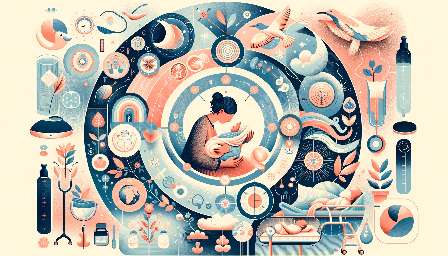Preparing for natural childbirth involves planning, education, and support. This comprehensive guide will cover the stages of labor and the process of childbirth to help expectant parents feel empowered and ready for the experience.
Understanding Natural Childbirth
Natural childbirth refers to the process of giving birth without the use of medications or interventions. Many parents choose natural childbirth to have a more active role in the delivery process and to minimize medical interventions.
Planning for Natural Childbirth
Preparing for a natural childbirth begins with creating a birth plan. This plan outlines the expectant parents’ preferences for labor and delivery, including their choice of location, support people, and desired comfort measures. It also allows them to communicate their wishes to their healthcare providers.
Education and Information
Education is key to preparing for natural childbirth. Expectant parents can attend childbirth education classes to learn about the stages of labor, coping techniques, and the role of their support team. Understanding the physiological process of childbirth and being aware of the options available can help alleviate fears and build confidence.
Physical Preparation
Physical preparation for natural childbirth includes staying active and healthy during pregnancy. Practicing prenatal yoga, engaging in regular exercise, and maintaining a balanced diet can contribute to overall well-being and prepare the body for the demands of childbirth.
Stages of Labor
The stages of labor are divided into three main phases: early labor, active labor, and the transition phase.
Early Labor
During early labor, contractions are typically mild and can be several minutes apart. This phase is often seen as the warm-up for labor. Many women can still manage daily activities during this stage and may choose to stay at home until their contractions become stronger and closer together.
Active Labor
Active labor is characterized by increased intensity and frequency of contractions. Cervical dilation accelerates, and this phase may require the most support and coping techniques. Expectant parents should be prepared for the transition to the next stage of labor as the contractions intensify.
Transition Phase
The transition phase marks the shift to the final stage of labor and is often the most challenging part. Contractions reach their peak intensity, and the cervix completes its dilation. This phase can be intense but is usually brief, leading to the urge to push and the birth of the baby.
The Process of Childbirth
When the cervix is fully dilated, it is time for the pushing stage. This stage varies in length and requires significant effort from the birthing person. With the guidance of their support team, they work to effectively push the baby through the birth canal.
Birthing the Baby
Once the baby’s head is visible, the birth team will support the birthing person through the final stages of labor. After the baby’s head is born, the rest of the body follows. Expectant parents can work with their healthcare provider to find the most comfortable positions for pushing and to manage any challenges that may arise.
Early Moments with the Baby
As the baby is born, they are placed on the birthing person’s chest for skin-to-skin contact, which helps regulate the baby’s temperature and promotes bonding and breastfeeding. The healthcare team will assess the baby’s health and administer any necessary care while supporting the new family in the first precious moments together.
Conclusion
Preparing for natural childbirth involves comprehensive planning, education, and physical and emotional preparation. Understanding the stages of labor and the process of childbirth empowers expectant parents as they anticipate this life-changing experience. By being informed and supported, they can approach natural childbirth with confidence and readiness.


